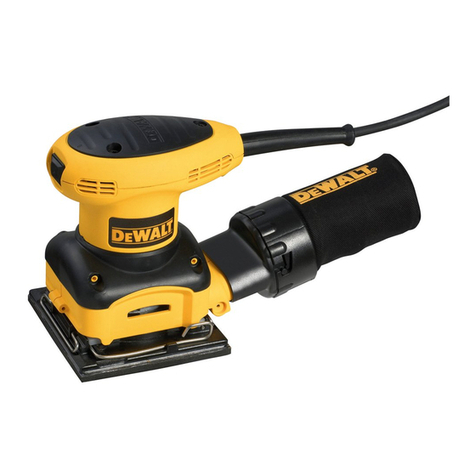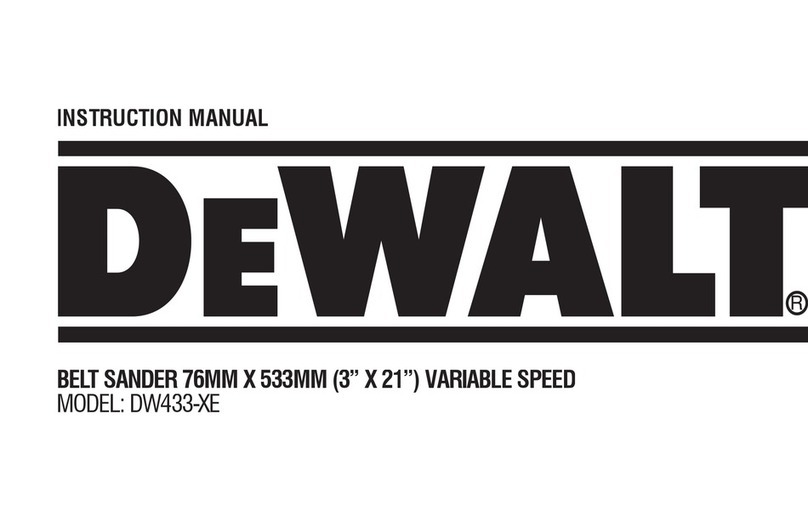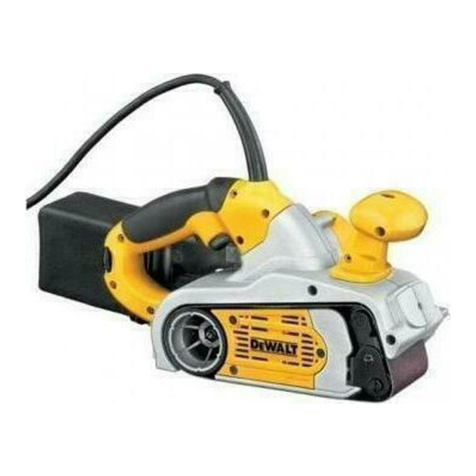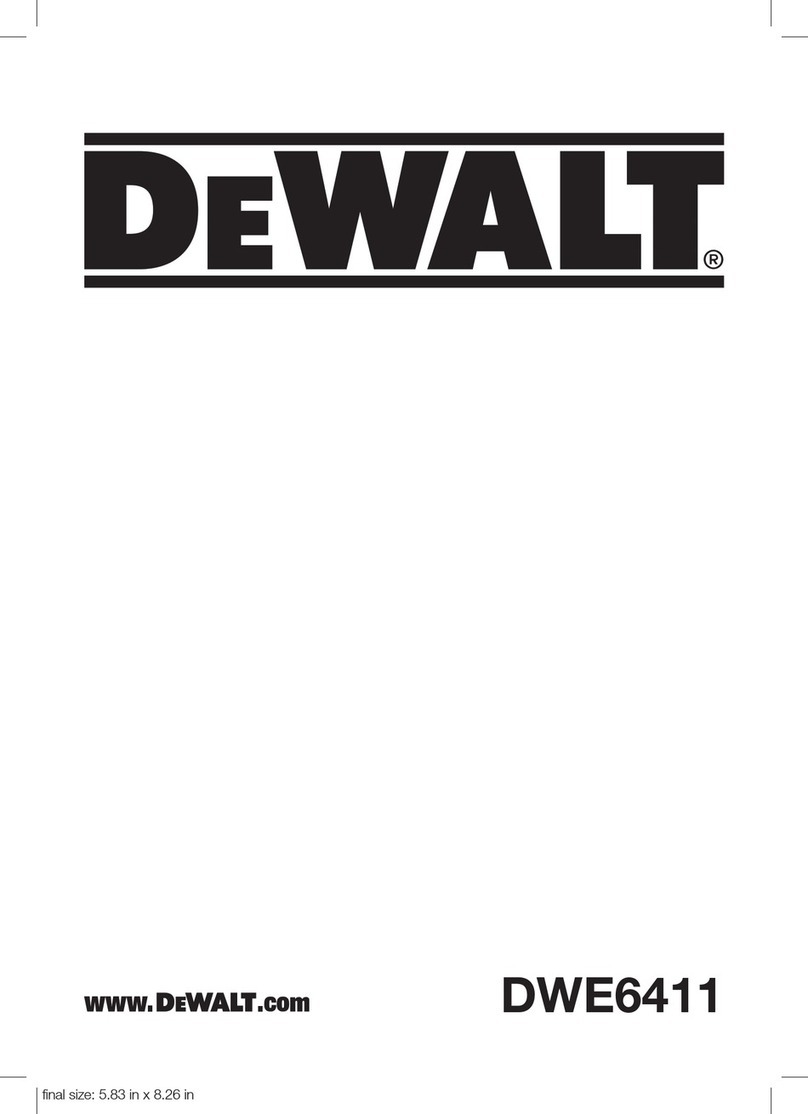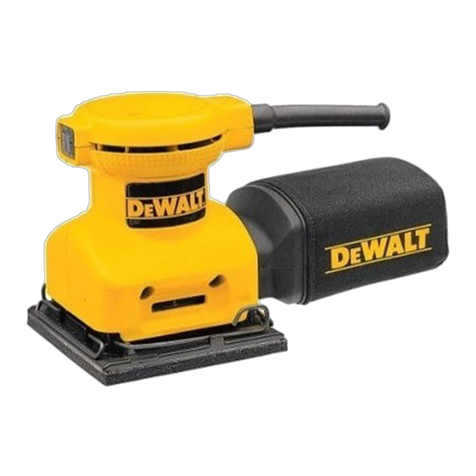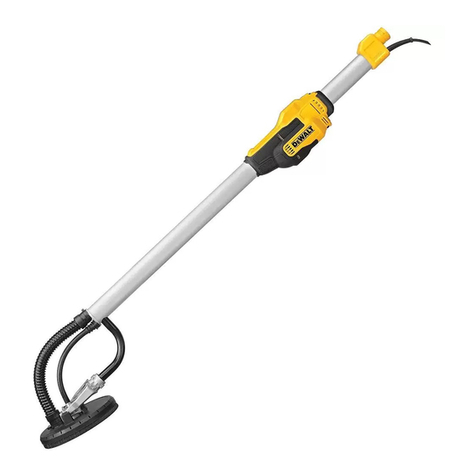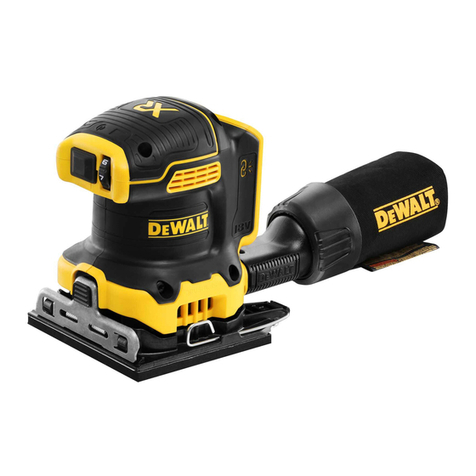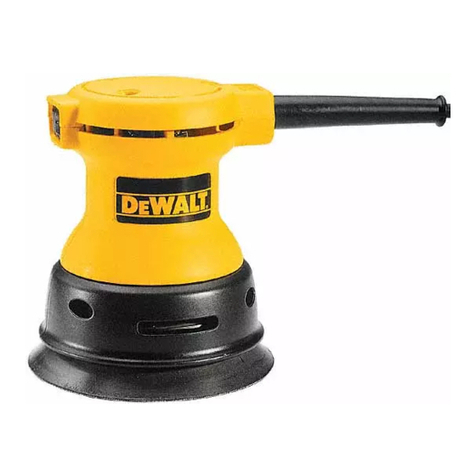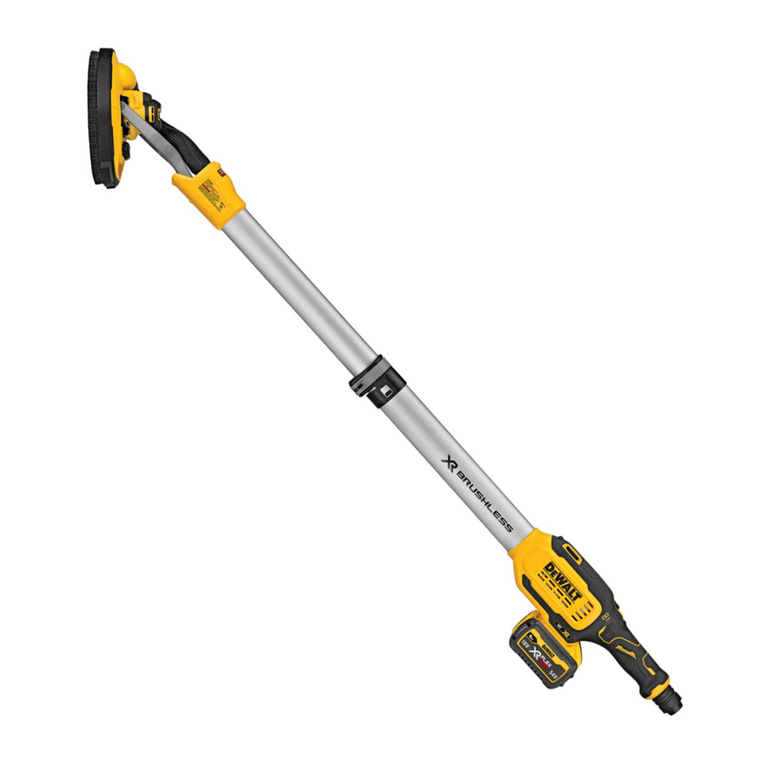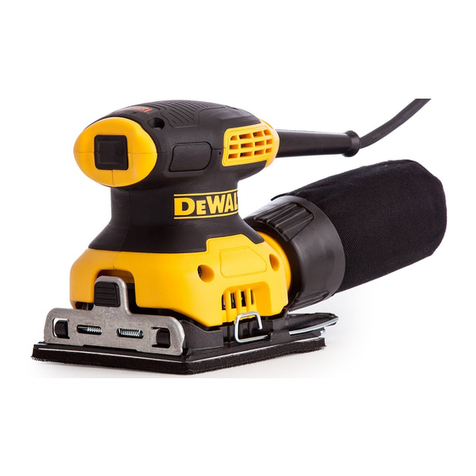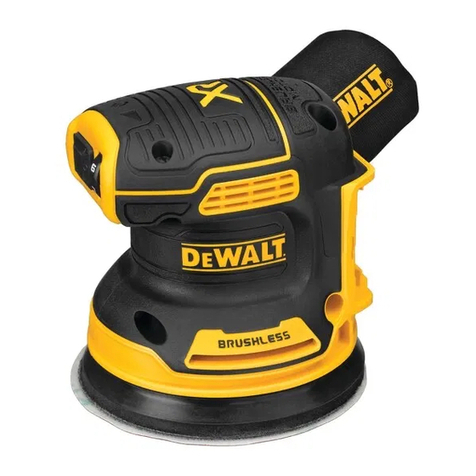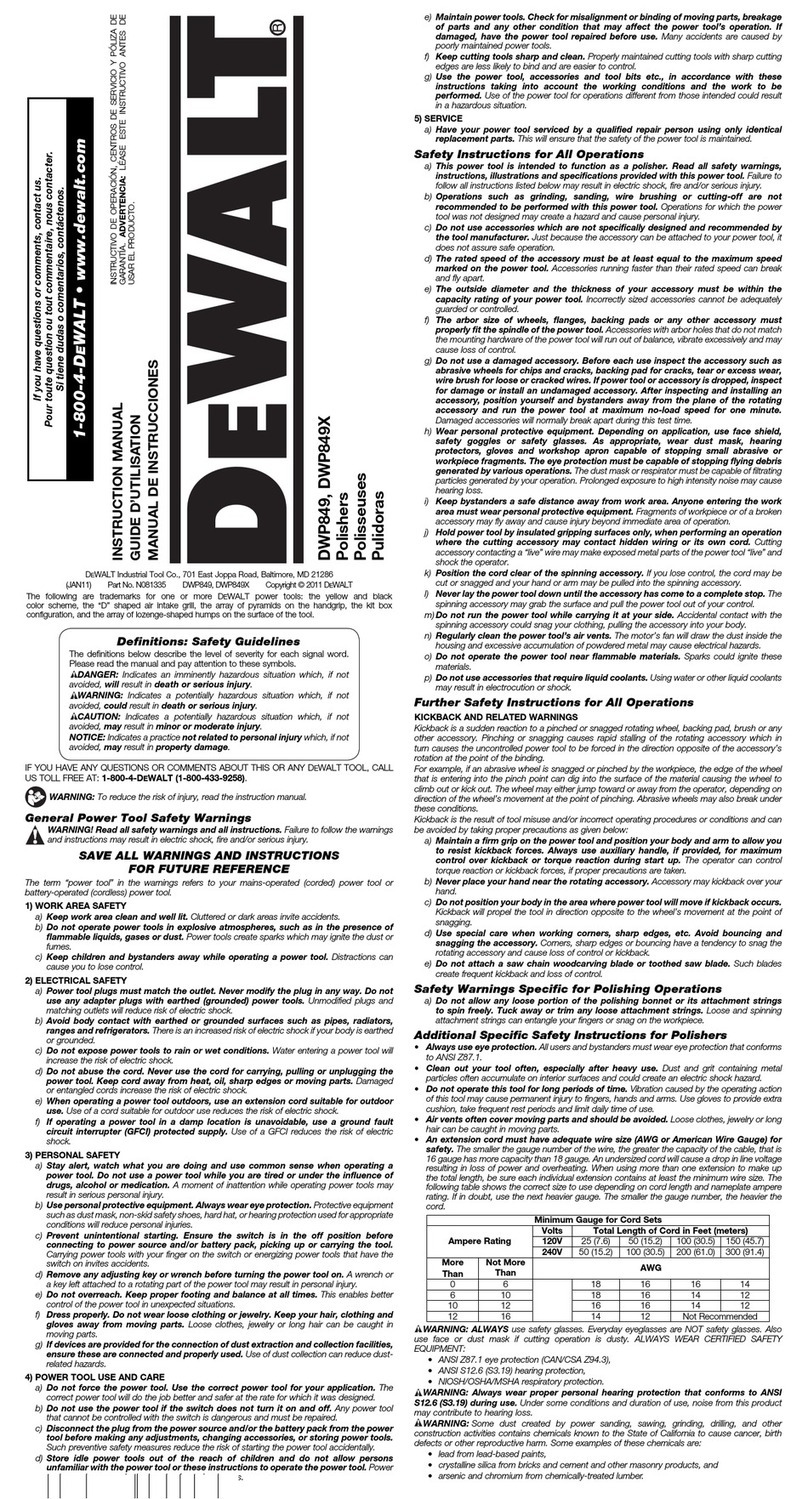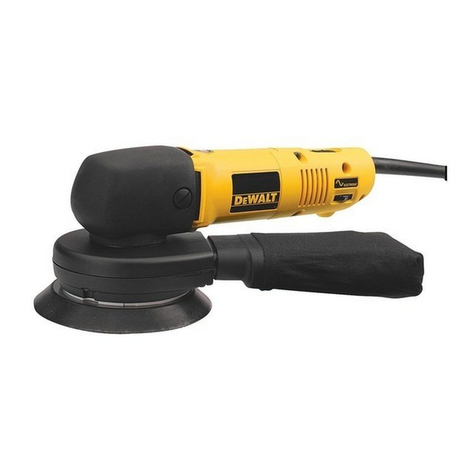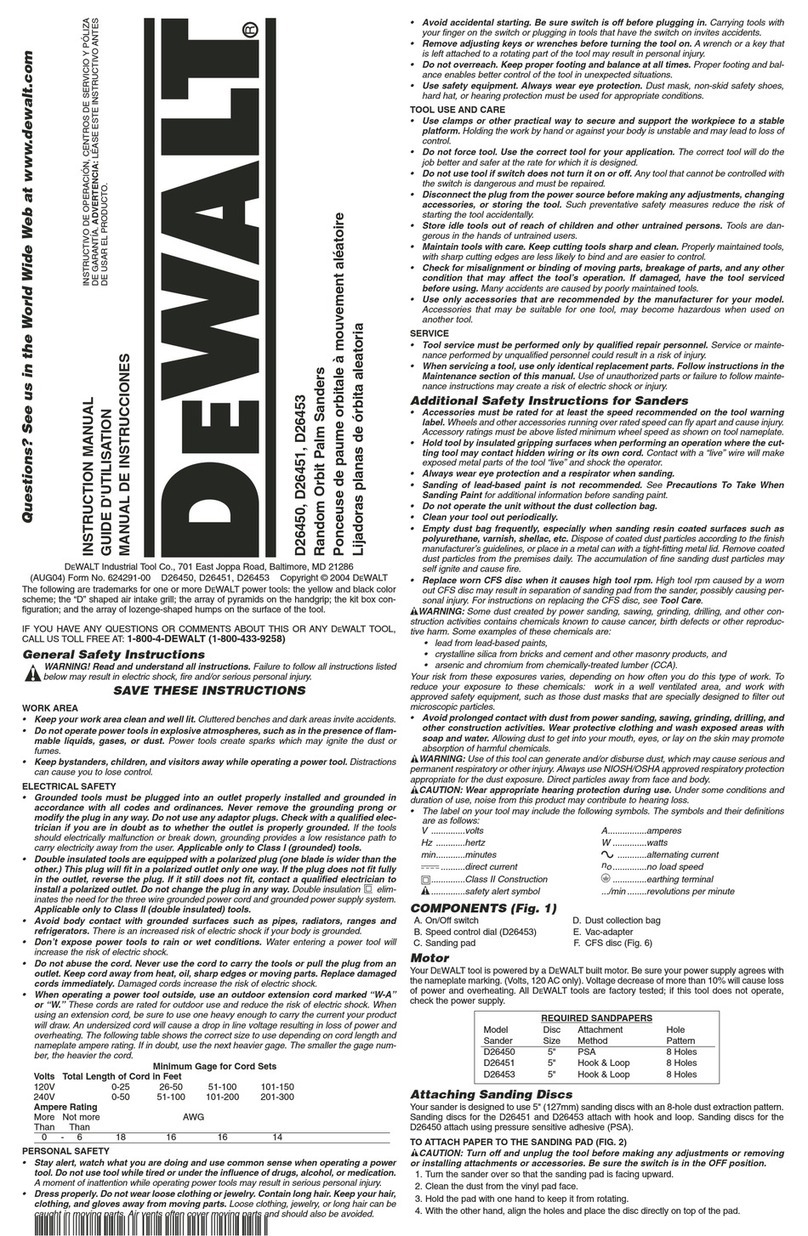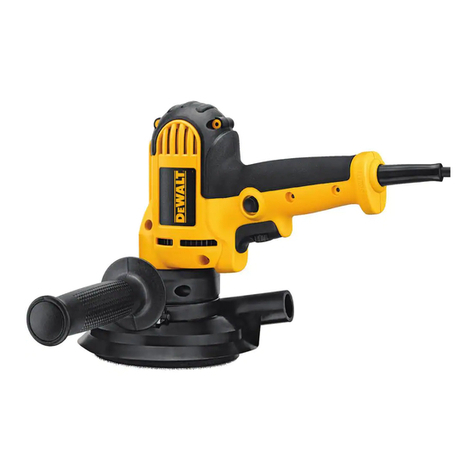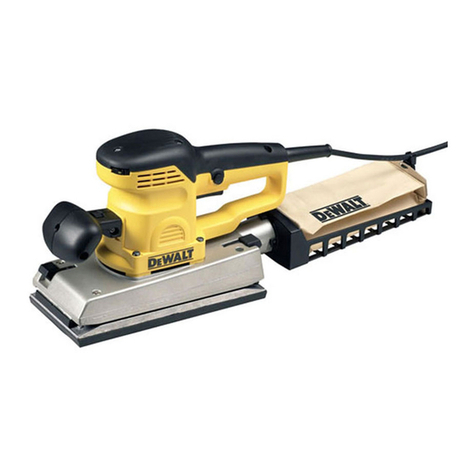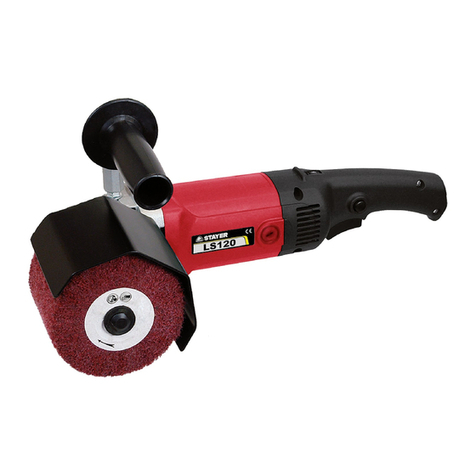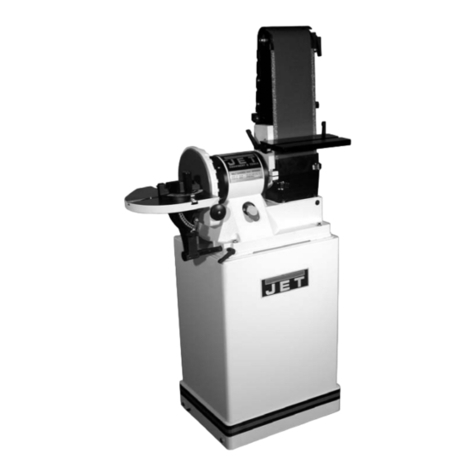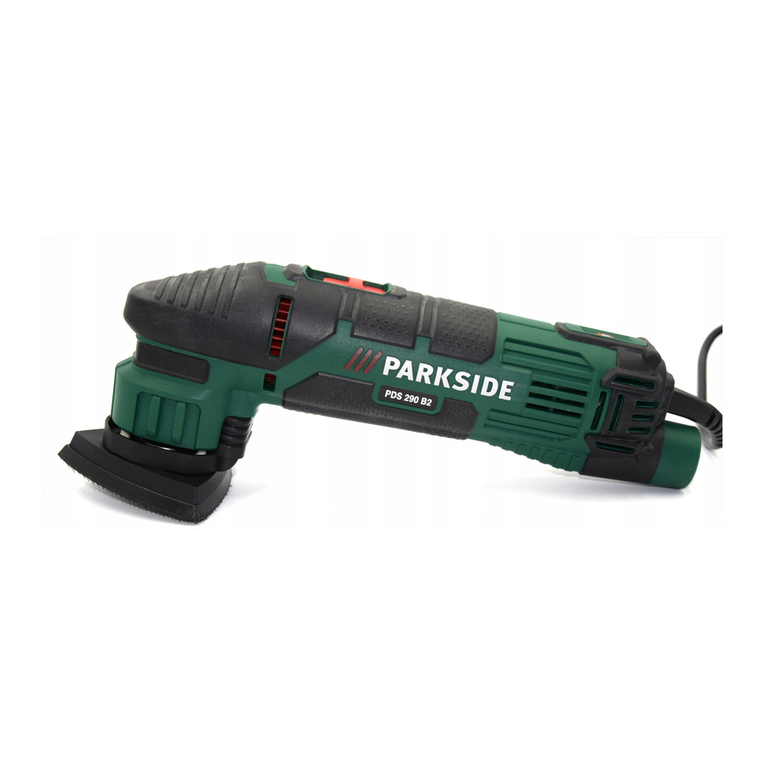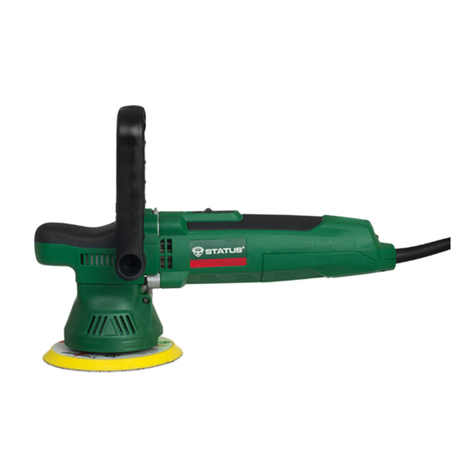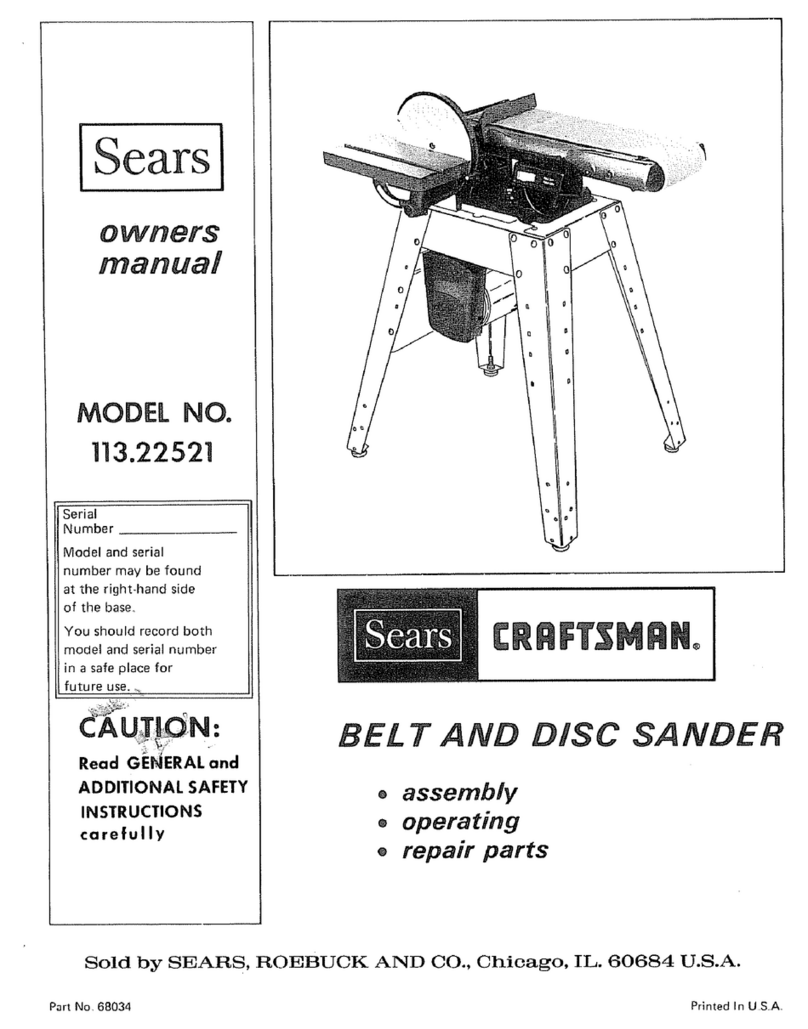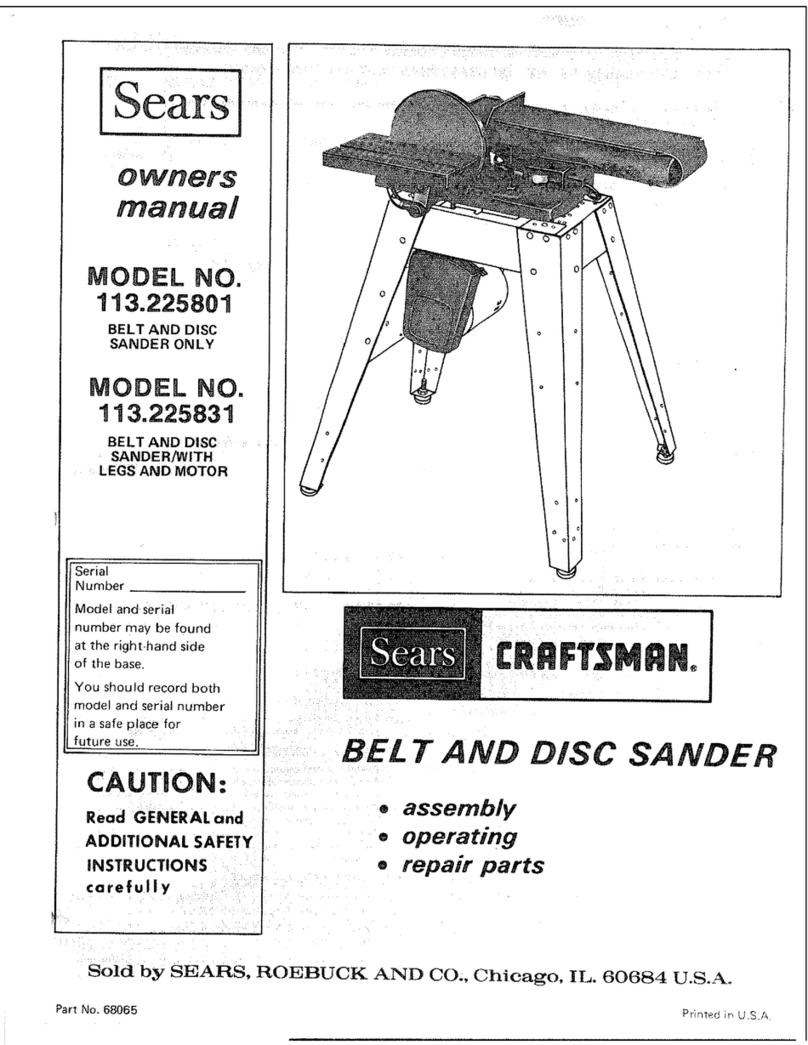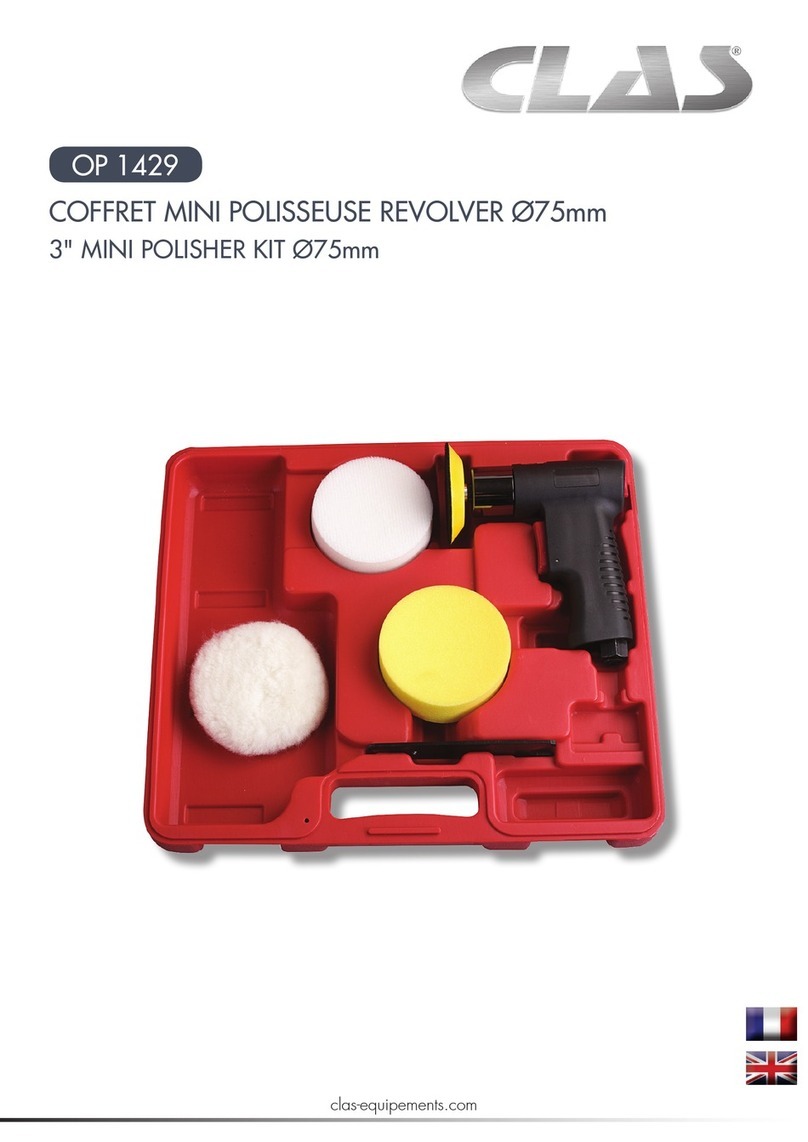3
e) Maintain power tools. Check for misalignment or binding of moving parts,
breakage of parts and any other condition that may affect the power tool’s
operation. If damaged, have the power tool repaired before use. Many
accidents are caused by poorly maintained power tools.
f) Keep cutting tools sharp and clean. Properly maintained cutting tools with
sharp cutting edges are less likely to bind and are easier to control.
g) Use the power tool, accessories and tool bits, etc. in accordance with
these instructions, taking into account the working conditions and the work
to be performed. Use of the power tool for operations different from those
intended could result in a hazardous situation.
5) SERVICE
a) Have your power tool serviced by a qualified repair person using only
identical replacement parts. This will ensure that the safety of the power tool
is maintained.
Electrical Safety
The electric motor has been designed for one voltage range only. Always check that
the power supply corresponds to the voltage on the rating plate. 220–240 V AC
means your tool will operate on alternating current. Operation at a voltage outside this
range can cause loss of power and can result in overheating. All DEWALT tools are
factory tested; if this tool does not operate, check the power supply. Your DEWALT
tool is double insulated, therefore no earth wire is required.
• Young children and the infirm. This appliance is not intended for use by young
children or infirm persons without supervision.
– This appliance is not intended for use by persons (including children) with
reduced physical, sensory or mental capabilities, or lack of experience and
knowledge, unless they have been given supervision or instruction concerning
use of the appliance by a person responsible for their safety.
– Children should be supervised to ensure that they do not play with the appliance.
•Replacement of the supply cord. If the supply cord or plug is damaged, it must
be replaced by the manufacturer or an authorised DEWALT Service Centre in
order to avoid a hazard.
Extension Cords
CAUTION: Use only extension cords that are approved by the country’s Electrical
Authority. Before using extension cords, inspect them for loose or exposed wires,
damaged insulation and defective fittings. Replace the cord if necessary.
Additional Specific Safety Instructions for Sanders
• Hold power tools by insulated gripping surfaces when performing an operation
where the cutting tool may contact hidden wiring or its own cord. Contact with a
"live" wire will make exposed metal parts of the tool "live" and shock the operator.
• Do not sand metal of any kind with your belt sander. Sparks may be generated by
sanding screws, nails or other metals which may ignite dust particles.
• Do not wet sand with this sander. Liquids may enter the motor housing and
cause electric shock.
• Empty dust bag frequently, especially when sanding resin-coated surfaces such
as polyurethane, varnish, shellac, etc. The accumulation of fine sanding dust
particles may self ignite and cause fire.
• Clean out your tool often, especially after heavy use. Dust and grit containing
metal particles often accumulate on interior surfaces and could create a risk
of serious injury, electric shock or electrocution. ALWAYS WEAR SAFETY
GLASSES.
• Air vents often cover moving parts and should be avoided. Loose clothes,
jewellery or long hair can be caught in moving parts.
WARNING: We recommend the use of a residual current device with a residual
current rating of 30mA or less.
WARNING: ALWAYS wear approved protective safety equipment complying with
the following standards:
• Eye protection: AS/NZS1337 Eye Protectors for Industrial Applications;
• Hearing protection: AS/NZS1270 Acoustics – Hearing Protection;
• Respiratory protection: AS/NZS1716 Respiratory Protective Devices.
WARNING: Some dust created by power sanding, sawing, grinding, drilling, and
other construction activities contains chemicals known to cause cancer, birth defects
or other reproductive harm. Some examples of these chemicals are:
• lead from lead-based paints,
• crystalline silica from bricks and cement and other masonry products, and
• arsenic and chromium from chemically-treated lumber.
Your risk from these exposures varies, depending on how often you do this type of
work. To reduce your exposure to these chemicals: work in a well ventilated area, and
work with approved safety equipment, such as those dust masks that are specially
designed to filter out microscopic particles.

